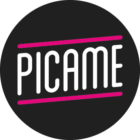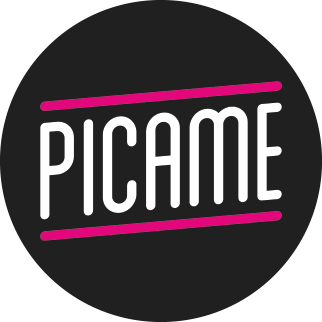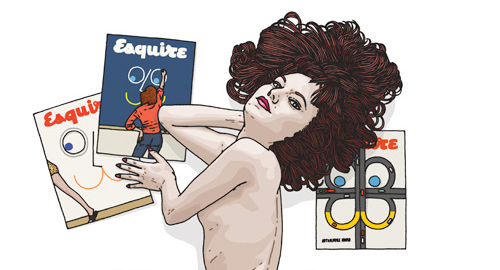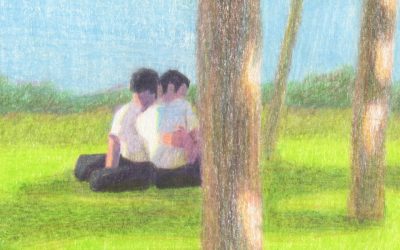[English version along the post]
Qualcuno lo ha definito “lo specialista delle penne“, altri lo chiamano “il Justin Bieber del disegno“. C’è chi afferma che cazzeggi per guadagnarsi da vivere, altri dicono che sia Batman. Di Mr. Bingo non si conosce la vera identità ma a renderlo unico ed inconfondibile è il dissacrante sense of humour con cui permea ogni sua illustrazione.
La sua arma è l’attenzione per i particolari di chi osserva la società affascinato dalle derive estetico-consumistiche, in cui noi tutti ci riconosciamo, e con cui riesce invariabilmente a strapparci una risata. Gli abbiamo posto alcune domande e in quest’intervista, la prima rilasciata ad un magazine italiano, il pungente sarcasmo del personaggio ha lasciato inaspettatamente spazio alla pacata gentilezza della persona.
Ciao Mr. Bingo, benvenuto su PICAME. Lavori come illustratore da oltre dieci anni, e non è esagerato dire che sei una celebrità nel settore. Guardando indietro, riesci ad individuare i passaggi che hanno costruito la tua carriera così com’è oggi?
Haha, non sono sicuro se si possano usare le parola celebrità ed il mio nome nella stessa frase! Credo di essere conosciuto in tutto il piccolo mondo dell’illustrazione e ho collezionato un paio di “fan” lungo la strada perché faccio cose divertenti che piacciono alla gente su Internet. Non riesco a pensare di aver fatto cose estremamente rilevanti che davvero abbiano rivoluzionato qualcosa, ad esser sincero. Faccio l’illustratore dal 2001 (a tempo pieno dal 2003) e mi sono sempre impegnato duramente per rendere il mio lavoro coinvolgente. Non ho mai avuto un piano. Ho solo creato e mostrato alla gente ciò che avevo fatto. Sembra funzionare! Probabilmente Internet è stata lo strumento più utile per avere “successo”, per condividere e raggiungere un pubblico molto più ampio.
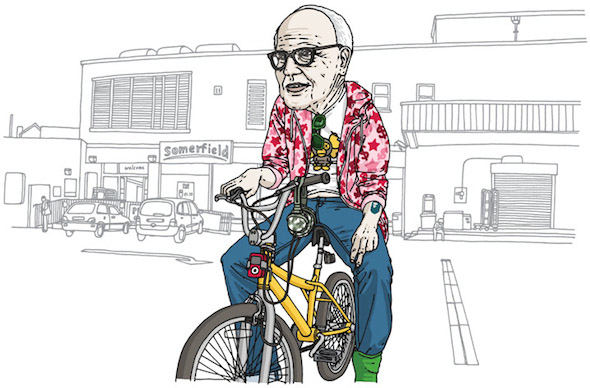
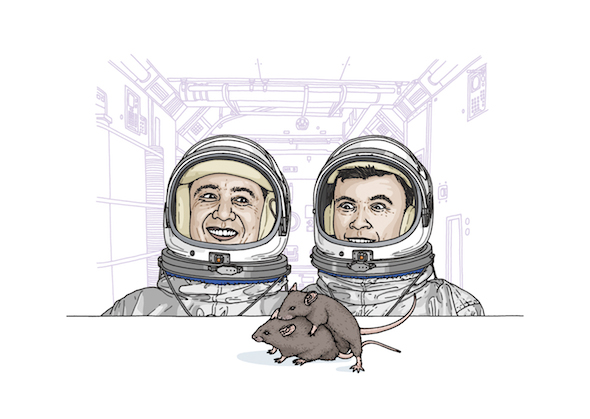
Il tuo stile è un mix di perizia tecnica e umorismo caustico. Entrambe sono abilità su cui una persona può lavorare, ma deve indubbiamente possederle in partenza: come le hai sviluppate, e com’è cambiato il tuo modo di disegnare nel corso degli anni?
Grazie, sei molto gentile. Ho sviluppato la tecnica (disegnare a matita colorando poi con Photoshop) nel corso degli anni e l’ho affinata. L’umorismo è sempre esistito, credo. Questa è l’unica cosa che posso fare senza realmente sforzarmi o cercando di migliorare; è una capacità innata.
Se nelle interviste ti chiedono quali siano le tue ispirazioni resti vago e, cito dalla tua pagina Wikipedia, affermi: “the local ASDA supermarket, thick humans, fat humans, dogs who wear clothes, the British abroad, overheard conversations and juvenile graffiti”. Stavolta ti chiedo di fare dei nomi nel campo delle arti visive oppure di indicare cosa, sia questo un evento, un personaggio, un sentimento, costituisce per te la più importante fonte di idee.
Sono vago perché sento che tutto può essere stimolante. Se dovessi elencare alcune cose reali o persone che mi ispirano, mi piacerebbe dire il comico satirico Chris Morris, gli artisti David Shrigley e Paul Davis. Ma come ho detto, molte cose che faccio sono ispirate da esperienze di vita reale, in particolare da progetti come “Hate Mail”con il quale sto prendendo ciò che mi infastidisce delle persone per trasformarlo in arte.


Le Hate Mails sono un successo: la gente ti chiede di essere insultata, oppure di insultare un amico o un parente. Ho visto anche personaggi famosi nella lista. Sono offese buffe ed estemporanee la cui domanda non cala. Ci puoi raccontare come hai avuto l’idea?
Ero seduto nel mio studio a tarda notte pochi anni fa e ho twittato “Invierò una cartolina offensiva alla prima persona che risponde a questo tweet”. Un sacco di gente ha risposto e ho inviato al vincitore, Jonathan Hopkins, una cartolina dicendogli di andare affanculo. La gente sembrava davvero divertita così ho aperto un servizio pochi giorni più tardi, invitando estranei a pagare per essere insultati.


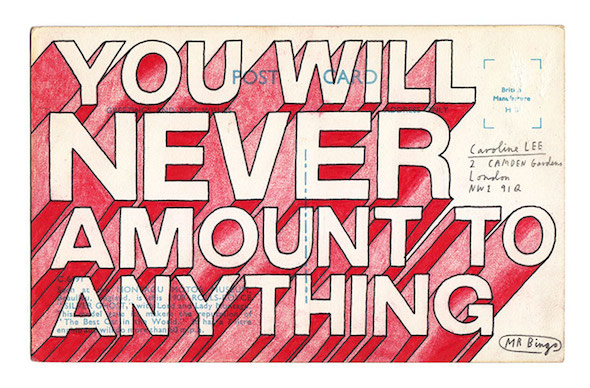
Oltre alla fervente attività di illustratore so che ne hai una altrettanto intensa come oratore alle varie conferenze cui vieni invitato. Che cosa ti chiede la gente? Cosa rispondi quando ti chiedono consigli su come si diventa illustratori?
Mi piace parlare agli eventi, è divertente, è qualcosa di diverso. Non mi capita spesso di parlare di illustrazione visto che il pubblico è normalmente piuttosto vario. Quando la gente chiede come si possa diventare illustratore dico che bisogna lavorare sodo, senza aspettarsi un successo immediato. E farlo solo se c’è vera passione, provando ad affidarsi ad un agente e assicurandosi che le persone giuste vedano i tuoi lavori.
Una curiosità: “Mr. Bingo lavora mai gratis?” 🙂

C’è questa cosa divertente nell’industria “creativa” in cui le persone sono spesso tenute a lavorare per niente e vengono offerti altri tipi di incentivi che per me non hanno mai avuto senso come alternativa. Ho essenzialmente un approccio diretto e semplice e se lavoro per qualcuno mi aspetto di essere pagato. Sono stufo delle persone che mi chiedono di lavorare gratis, così ho deciso di metterlo sul mio sito come una sorta di sezione FAQ per evitare che la gente me lo chieda. Offro i miei servizi gratuitamente solo per beneficienza, ma questa è una questione diversa.
Al di là degli insulti personalizzati, so che sei un cultore e un collezionista di cartoline vintage: cosa ti attrae di esse in particolare?
Non so spiegare esattamente perché mi piacciono tanto. C’è qualcosa di nostalgico che mi attrae. La stampa, i colori. Offrono una panoramica del passato che mi incuriosisce osservare. Amo vedere com’erano i luoghi, come vestivano le persone, che automobili si guidavano. Alcune delle cartoline della mia collezione sono scritte sul retro e offrono una visione del passato, del momento in cui le persone in vacanza inviavano cartoline per far sapere quello che stavano facendo. Alcune sono banali, altre davvero bizzarre. Mi piace la natura voyeuristica del leggere cartoline di sconosciuti.


Ho visto su Instagram che possiedi una stilosissima Bic di plastica dorata. Quali sono gli strumenti con cui preferisci disegnare?
In realtà è una normale Bic in plastica pur rifinita con un colore oro brillante. Però se la gente guardando il mio profilo Instagram pensa che possieda una biro in oro massiccio sono felice. La mia arma principale per disegnare è una Pilot G-1 0,7 millimetri. Il costo è di circa £1,70, credo. Quando disegno le Hate Mail sono molto più libero ed espressivo ed utilizzo pastelli, matite colorate, colori acrilici e biro.
Dopo Hate Mails c’è un progetto personale a cui stai lavorando o che pensi di realizzare in futuro?
No! Ho esaurito le idee! Ho bisogno di fare qualcosa di diverso, ma non so cosa sia ma… spero che mi venga in mente. Nel frattempo “Hate Mail” va avanti.

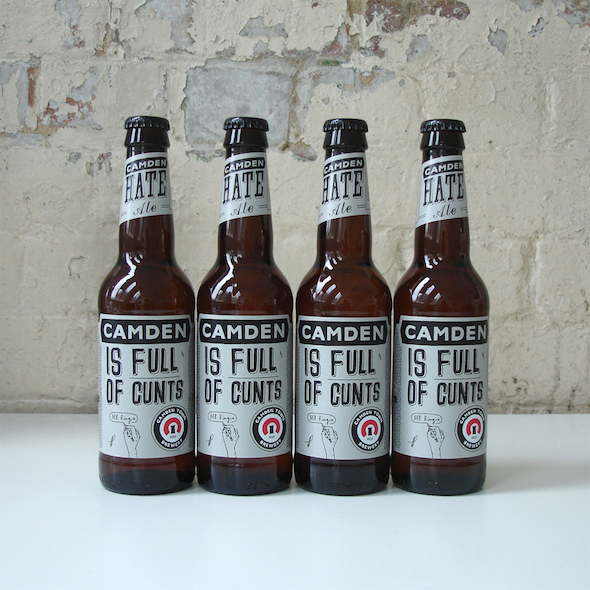
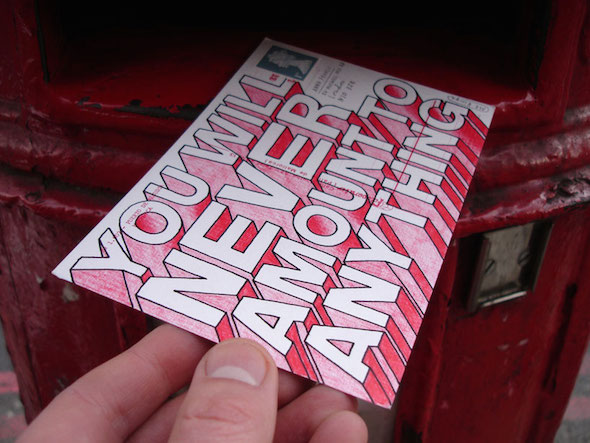

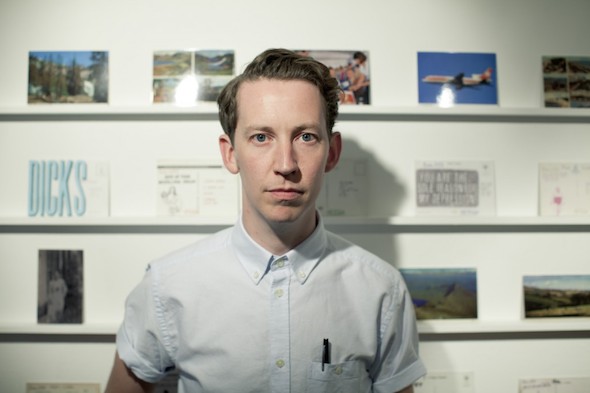
__
ENG
“Some say he’s the ‘Master of pens’. Some call him the ‘The Justin Bieber of drawing’. Some say he fucks about for a living.”
Hello Mr. Bingo, welcome to PICAME. You’ve been working as an illustrator for over ten years, and without overstatement we can say that you’re a celebrity in the field. Looking back, can you identify the steps that have built your career as it is today?
Haha, I’m not sure if you could ever use the word celebrity in the same sentence as me! I guess I’m known in the tiny world that is illustration and I’ve picked up a few ‘fans’ along the way because I do funny stuff that people on the internet like. I can’t think of any hugely relevant steps that really changed anything to be honest. I’ve been working as an illustrator since 2001 (full time since 2003) and I’ve always tried hard to make engaging work. I’ve never had a plan. I just make stuff and put it out there and it seems to be working! The internet has probably been the most helpful thing to me having ‘success’ as it’s allowed me to share everything and reach a much bigger audience which wasn’t possible before.
Your style is a mix of technical expertise and caustic humour, both of which are skills a person can improve, but have to possess necessarily: how did you develop them, and how did the way you draw change over the years?
Thank you, that’s very kind. I’ve developed the technical (cheating by tracing stuff with pencils and then colouring in stuff in photoshop) side of things over the years and got it down to quite a specific process now. The humour has just always been there I think. That’s the one thing I can do without really learning or trying to improve on, it’s that one lucky skill was given.
During your interviews, when they ask you about your inspirations, you remain generally vague. I quote from your Wikipedia page: “the local ASDA supermarket, thick humans, fat humans, dogs who wear clothes, the British abroad, overheard conversations and juvenile graffiti”. This time I ask you to tell the names of the most important source of ideas in the field of visual arts, or, to indicate an event, a person, a feeling.
I’m vague because I feel that everything and anything can be inspiring. If I had to list some actual things or people who inspire me, I’d say satirist Chris Morris, artists David Shrigley and Paul Davis. But like I say, a lot of stuff I make is inspired by real life experiences, especially in projects like ‘Hate Mail’ where I’m taking things that annoy me about people and making art about it.
The Hate Mails are a success: people ask you to be insulted or to insult a friend or relative, and I also saw some famous people on the list. Offenses are funny, and demand does not drop. Can you tell us how you got the idea?
I was sitting in my studio late one night a few years ago and I tweeted “I will send an offensive postcard to the first person to reply to this tweet”. Lot’s of people replied and I sent the winner, Jonathan Hopkins, a postcard telling him to fuck off and that he had shit legs. People really seemed to enjoy it so I opened a service a few days later, inviting strangers to pay to be insulted.
In addition to the fervent activity of illustrator, I know that you have an equally engaged one as a speaker at various conferences to which you are invited. What do you ask the people? How do you respond when they ask you advices on how to become illustrators?
Yeah I love speaking at events, it’s really fun and something different to do. I don’t often talk much about illustration as the audiences are normally pretty varied. If people ask how can they become an illustrator I’ll tell them to work hard, don’t expect instant success, only do the job if you’re really passionate about it, try having an agent and make sure the right people see your work.
A curiosity: “Does Mr. Bingo work for free”? 🙂
There’s a funny thing in ‘creative’ industries where people are often expected to work for nothing, and often offered some other kind of incentive which to me, never made sense as an alternative. I just have a simple straight forward approach to work, and if I work for someone, I expect to get paid. I got bored of people asking me to work for free so I decided to put that up on my site as a sort of FAQ section and to save people asking me. The only time I’ll offer my services for free is if it’s for charity, which is a different matter.
Beyond the personal insults, I know you’re a lover and a collector of vintage postcards: what attracts you to them in particular?
I can’t explain exactly why I like them so much. There’s something very nostalgic about them which I like. The printing, the colours. They also offer an insight into the past which I’m curious to see. It’s nice to see what places looked like and how people dressed and what cars they drove. Some of the postcards in my collection are filled in on the back too, so those ones offer a unique insight into a different time where people sent these little letters from their holidays to let people know what they were up to. Some of them are mundane, some of them are really bizarre. I enjoy the voyeuristic nature of reading strangers postcards too, it’s kind of odd.
I have seen on Instagram you own a glamorous plastic golden Bic. What are the tools you prefer drawing with?
It’s actually a regular plastic Bic but just finished in a shiny gold colour, but he ho, if people look at my Instagram and think I own a solid gold biro, then I’m happy with that. My main weapon of choice for line drawing is a Pilot G-1 0.7mm. It costs about £1.70 I think. When I’m Hate Mailing, I’m a lot more free and expressive with my drawing and mark making and I use coloured pencil crayons, acrylic paint and biro.
After Hate Mails there is a personal project you’re working on or that you think about realising it in the future?
No! I’ve run out of ideas! I need to do something else but I don’t know what it is yet… hopefully it’ll come. In the meantime, Hate Mail is still going, it’s not finished yet.
